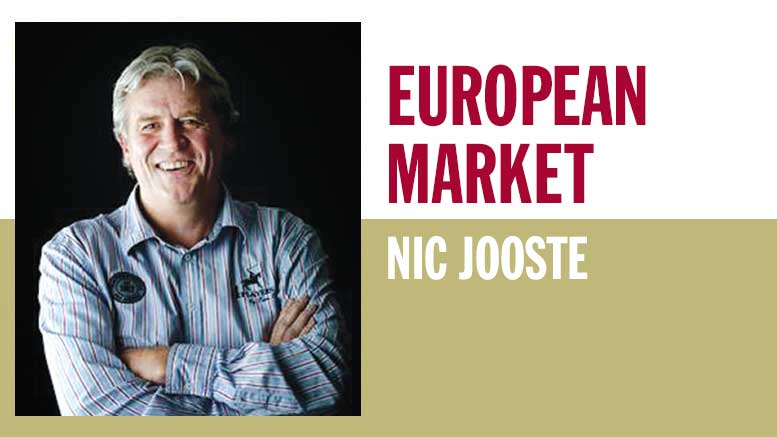Produce Opportunities In A Circular Economy
April 1, 2018 | 4 min to read
In the The Netherlands, the concept of the circular economy embodies the notion of creating value from minimal resources. With 55 percent of the country below sea level, it has become the second largest agricultural exporter, fostering innovative projects in sustainability. Key examples include transforming mushroom waste into compost and developing seaweed-based burgers, emphasizing responsible consumption. Successful implementation requires collaboration among entrepreneurs, researchers, and consumers, driven by creative solutions to minimize waste and enhance resource use.

Originally printed in the April 2018 issue of Produce Business.
There is an age-old saying in The Netherlands: ‘Van een stuiver een dubbeltje maken.’ Literally translated, this means turning a nickel into a dime. What a wonderful comparison with the concept of the circular economy. To create double the value out of something that initially has very little (or no) value.
The Netherlands is a unique country. It is small (16,040 square miles compared with the United States’ 3.8 million square miles). 55 percent of the country lies below sea level. Yet ‘the Dutchies’ achieve some amazing feats. For instance, The Netherlands is the second largest agricultural exporter in the world. In 2015, agricultural exports from The Netherlands amounted to $99.9 billion, putting it in second place to the United States.
The Netherlands has an intense involvement in sustainability. The past years have seen an amazing rise in Dutch projects relating to the circular economy, an industrial model designed to get the most from initial resources before recovering and regenerating remaining materials to minimize waste, as opposed to a “take, make and dispose of” economy. Researchers estimate the circular economy in the Netherlands has a potential market value of $89.7 billion per year and will encompass 54,000 jobs by 2023. An increasing number of companies in the Dutch food and agri sector are exploring the opportunities offered by the circular economy. Minimizing value destruction is key, with the focus on less raw material consumption, less waste and a more cost-effective way of working. Consulting firm McKinsey & Company (New York) estimates the circular economy in Europe will generate $2.2 trillion by 2030, provided the European Union makes maximum use of technological developments.
Minimizing value destruction is key, with the focus on less raw material consumption, less waste and a more cost-effective way of working.
Currently, much of our waste ends up on a garbage dump or in an incinerator. In a circular economy, these waste products become raw materials and are reused. To achieve this fresh thinking must be brought about by a ‘smarter’ mindset. With The Netherlands’ position as a leading horticultural nation, this seems a logical place to start, as vegetable products (raw materials) are the basis of a circular economy. I predict new products made from recycled raw materials, using sustainable packaging material, will become a major player in the field of sustainability. Here are some examples of the Dutch ‘can do’ approach to convince you:
- A process to turn biological waste from the mushroom production process into compost, fuel and sustainable heat (and thus saving millions of cubic meters of natural gas each year) has been developed by a mushroom grower that produces five million kilograms of mushrooms annually. The cultivation residue of these mushrooms (the so-called champost) is converted into heat and valuable manure for the farm. The result is the company supplies its own mushroom farm with heat, allowing the consumption of one million cubic meters of natural gas to be replaced annually.
- Suzanne Kreischer and Mark Kulsdom created the Dutch Weed Burger. They didn’t just want their burgers to be a vegan alternative to meat; they wanted to encourage people to rethink their consumption habits through the promotion of a food source that’s at the bottom of the food chain – organic and sustainable seaweed. These nutrition-packed burgers are organic, vegan, kosher, halal and most importantly, delicious. Other tasty streetfood favorites include Seawharma and The Dutch Weed Dog. Kreischer: ‘Meat as a source of protein is no longer sustainable toward the ecological system. The demand for proteins is growing, but the Earth remains the same size. Whilst beans and other plant-based products are good sources of protein, you still need agricultural land and fresh water to grow them. Seaweed, on the other hand, is grown and harvested in the sea.’
- Jan Willem Bosman Jansen, director of Dutch company GRO, stumbled upon the idea to grow oyster mushrooms on coffee grounds when he visited Zimbabwe some years ago. There, he saw mushrooms being grown on residual waste from a coffee plantation to provide children in a home with food. Today, Jansen grows oyster mushrooms on coffee grounds, and produces ‘Henri’s Oyster Mushroom Soup.’ The soup is served in various Dutch catering establishments, which in turn supply the coffee grounds that the oyster mushrooms grow on. Soup is delivered to the restaurants, coffee grounds are collected, oyster mushrooms are grown on the coffee grounds, harvested and soup is again made. It is a perfect example of a circular process.
A circular economy must be feasible in the business environment and must also be in line with the wishes of consumers. A number of key actions are needed to arrive at this. Intensive cooperation between entrepreneurs, researchers, consumers and government must be created. Poor regulations must be abolished. A stimulating policy from the government is necessary, focusing on training and investing in research and knowledge development, encouraging entrepreneurs to become involved.
Bottom line? You can make the circular economy as difficult or as easy as you like. All it requires is creativity and the drive to make it work.
Nic Jooste is director of corporate communications, marketing and corporate social responsibility of Cool Fresh International in The Netherlands. The company is involved in an international circular economy project, which will see collaboration between fresh produce partners from different continents.
8 of 18 article in Produce Business April 2018

